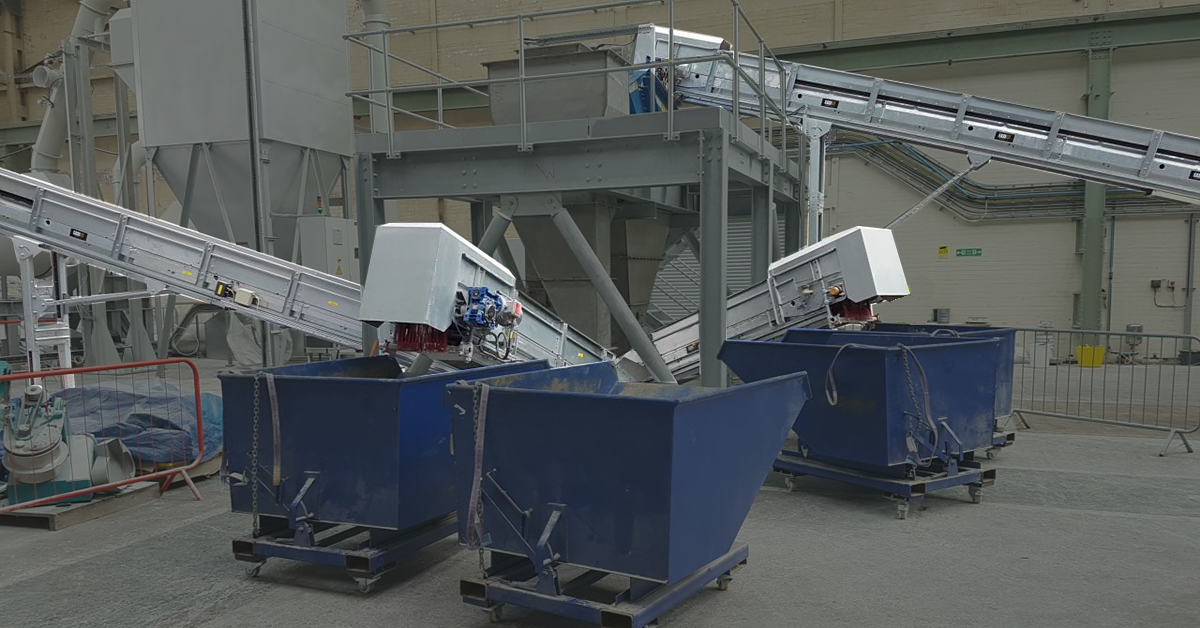With a reported 1.5 billion products reaching their end of life globally, every year – and a worrying 60% of these said to be landfilled, stockpiled, illegally dumped, or ‘lost’ from the resource chain – tires represent a notorious problem for the waste management industry. The impact that the unscrupulous handling of these redundant materials has on the environment, is also vast – not least when stockpile fires break out unexpectedly or are deliberately started to solve the mounting waste issue.
But the complex make-up of tire products and a lack of engineering advancement in this specific area of waste handling, means that for several years they have been considered economically unviable to process. But profit is not a dirty word, and firms should not be afraid of striving to make money from their operations, especially if they are to be commercially sustainable.
In the eyes of many – even those who want to support the drive to achieve a circular economy – end-of-life tires are simply a waste headache. But fast forward to 2020 and they could just become an industry hero.

The impact of COVID-19
The COVID-19 pandemic has contributed to newfound difficulties across the resource sector overall, with valuable recyclables now in short supply. Previously difficult waste streams – including tires – are therefore being re-evaluated for their resource potential.
Highly sought-after steel, for instance, remains ‘locked’ within tires, unless the products are shredded, and the composite materials liberated for segregation. And even the rubber itself is now deemed to be rich in potential.
In fact, devise a carefully-designed tire processing line and it is possible to extract the metal for resale and transform the rubber into a homogenous product that can be used for road base, tip cover, landscaping, and playground safety surfaces. Any residual material can be utilized in energy recovery processes including thermal desorption, to produce fuel oils and clean gas for electricity generation, plus a burn-efficient tire-derived fuel (TDF) for the cement industry.
Some savvy operators are already way ahead of the curve, of course, and did not need the Coronavirus outbreak to highlight the opportunities associated with intelligent tire processing. For these forward-thinking firms, all eyes are now on maximizing the margins from their plants.
The wealth in ‘waste’
Processing tires for recycling and energy recovery sounds like a complex task, and of course sophisticated machinery must lie at the heart of such an operation. But as is often the case, thanks to engineering advancements, ultra-clever technology can in fact be very simple to run. And, acknowledging the long-standing difficulties associated with making money from this once-deemed-unshreddable waste stream, tire processing systems are now also designed with profitability in mind. In fact, many waste handlers have achieved a payback period as short as 18 months.
The key to maximizing the wealth in this waste stream is the design of a processing line that can produce a contaminant-free, homogenous output, in a single pass. This reduces the capital investment required to build the system. If the technology is flexible and can be easily reconfigured to handle different input materials – including standard car or passenger tires, through to more rugged truck and OTR tires, and more – the investment is further protected. And if different output specifications ranging from 30-400mm can be satisfied, depending on end-user requirements, routes to market should open up too, to minimize risk.
The technology must be engineered to withstand the pressures of this tough, bulky waste stream, of course, and a slow-running machine with high torque should ideally be sought. This will also ensure minimal wear and long service intervals, which maintains plant uptime and keeps maintenance costs low, without any detriment to throughputs. The capacity of 8-10 tonnes per hour should be comfortably achievable, with operator safety always protected.

What’s next?
Acknowledgment of the resource potential in tires is only going to grow, and quickly. In fact, a product that has long proven troublesome for many could soon emerge as a widely recognized and important piece of the environmental jigsaw.
Various external factors such as the state of the commodity landscape – as well as operators’ own appetite to process end-of-life tires – means a number of rubber specialists now have the opportunity to develop not just cradle to grave systems for this ‘waste’ stream, but a completely closed-loop business model.
And that’s when things will get really exciting…
























